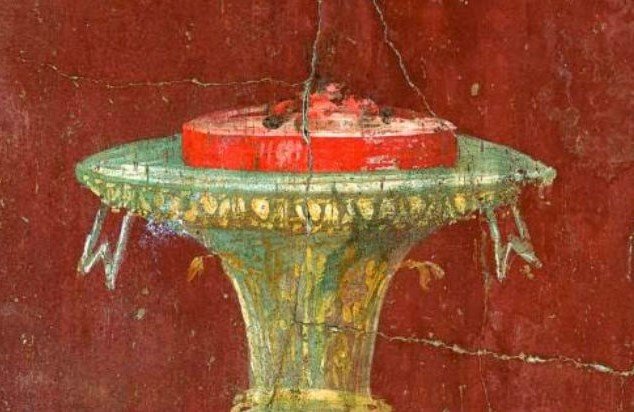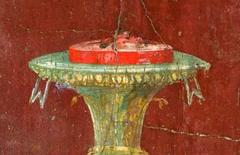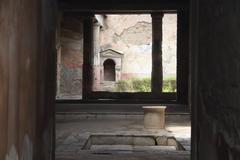
Guide to Visiting Villa Poppaea in Trecase, Italy
Published Date: 18/08/2024
Introduction to Villa Poppaea
Villa Poppaea, also referred to as Villa Oplontis or Oplontis Villa A, is one of the most exquisite and well-preserved Roman villas discovered in Italy. Nestled in Torre Annunziata, near Naples, this luxurious villa offers a fascinating glimpse into the opulent lifestyle of the Roman elite. The villa, believed to have belonged to Poppaea Sabina, the second wife of Emperor Nero, is renowned for its architectural grandeur and intricately designed frescoes (Wikipedia). Buried under nearly 10 meters of volcanic ash during the catastrophic eruption of Mount Vesuvius in 79 AD, it remained lost to the world until the 18th century. Systematic excavations in the 1960s revealed its extensive and well-preserved structure, making it a significant archaeological site and a UNESCO World Heritage site since 1997 (World History Encyclopedia). Visitors to Villa Poppaea can explore its replanted gardens, marvel at its frescoes, and gain insights into Roman art, architecture, and daily life. This comprehensive guide provides essential information on visiting hours, ticket prices, travel tips, and nearby attractions to ensure a memorable and enriching experience.
Contents
- Introduction
- History of Villa Poppaea
- Visitor Information
- Frequently Asked Questions (FAQ)
- Conclusion
Exploring Villa Poppaea: History, Visiting Hours, and Tips for Your Visit
History of Villa Poppaea
Discovery and Early Excavations
Villa Poppaea was first discovered between 1593 and 1600 during the construction of the Sarno aqueduct by engineer Domenico Fontana. Although the ancient city’s remains were uncovered, significant exploration didn’t occur until later. In 1785, Spanish architect Francesco La Vega conducted further explorations, but it wasn’t until 1964 that a full-scale excavation was officially approved. Unfortunately, initial excavations were chaotic, and no official records were kept until 1971, resulting in the loss of valuable information and many frescoes.
Architectural Features and Frescoes
The villa is renowned for its luxurious design and exquisite frescoes. The oldest part of Villa Poppaea dates back to around 50 BC and features Second-Style wall paintings with intricate designs and vibrant colors. After being damaged in the AD 62 Pompeii earthquake, the villa was rebuilt with Third-Style frescoes depicting mythological scenes, landscapes, and intricate architectural elements.
The Eruption of Mount Vesuvius
In 79 AD, Oplontis was buried in ash during Mount Vesuvius’s catastrophic eruption. The eruption’s force caused roofs and walls to collapse, making excavation and reconstruction challenging. Evidence suggests Villa Poppaea was uninhabited and undergoing renovation at the eruption, as numerous tools and stored statues were found on-site.
Later Excavations and Discoveries
In 1974, a second villa, known as Villa B, was discovered 300 meters east of Villa Poppaea. Built at the end of the 2nd century BC, Villa B was part of a wider settlement. It featured a central courtyard and numerous rooms used for manufacturing and storage, indicating it was devoted to producing wine, oil, and agricultural goods.
Preservation and Public Access
Today, around 60% of Villa Poppaea is exposed for visitors to explore. The villa’s 90 rooms include a 70-meter swimming pool, thermal baths, and beautifully landscaped gardens. These elements offer insights into Roman painting styles and daily life, providing a unique opportunity to experience the grandeur of ancient Rome.
Visitor Information
Visiting Hours and Tickets
Villa Poppaea is open to the public from 9:00 AM to 7:30 PM daily, with the last entry at 6:00 PM. Tickets can be purchased on-site or online, with prices ranging from €5 to €10. It is advisable to check the official website for any changes in hours or ticket prices before your visit.
Travel Tips
- Arrive Early: To make the most of your visit, arrive early to meet with your guide and fellow travelers.
- Photography: Photography is allowed, but avoid using flash to protect delicate artifacts.
- Gift Shop: There is a gift shop on-site where you can purchase mementos.
- Dining: Nearby eateries offer a variety of dining options for a taste of authentic Italian cuisine.
- Nearby Attractions: The proximity to historic sites like Pompeii and Herculaneum makes it possible to explore multiple locations in a single day.
Frequently Asked Questions (FAQ)
What are the visiting hours for Villa Poppaea?
Villa Poppaea is open daily from 9:00 AM to 7:30 PM, with the last entry at 6:00 PM.
How do I get tickets for Villa Poppaea?
Tickets can be purchased on-site or online. It is advisable to check the official website for the latest information on ticket prices and availability.
Is photography allowed at Villa Poppaea?
Yes, photography is allowed, but visitors should avoid using flash to protect the delicate frescoes and artifacts.
Are there dining options nearby?
Yes, there are several nearby eateries offering a variety of dining options, allowing you to enjoy authentic Italian cuisine.
Can I visit other historic sites nearby?
Yes, the proximity to other historic sites like Pompeii and Herculaneum makes it possible to explore multiple locations in a single day.
Conclusion
Villa Poppaea stands as a testament to the opulence and artistic achievements of ancient Rome. Its well-preserved frescoes, architectural features, and historical significance make it a must-visit destination for anyone interested in Roman history and culture. Plan your visit today and step back in time to experience the grandeur of ancient Rome firsthand.
For more information and to plan your visit, check out our other related articles or follow us on social media for updates.
This article has been edited for clarity and conciseness by:


